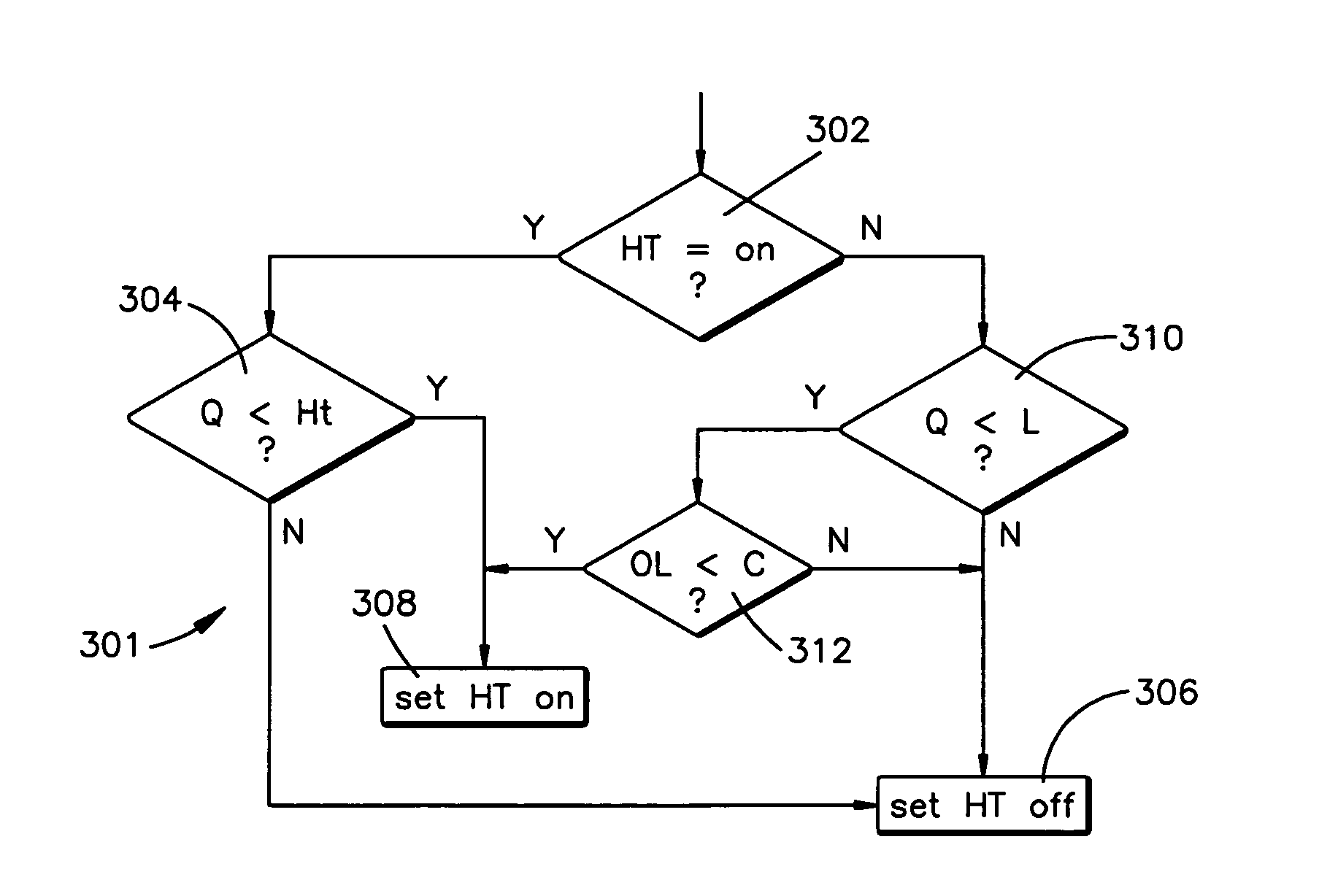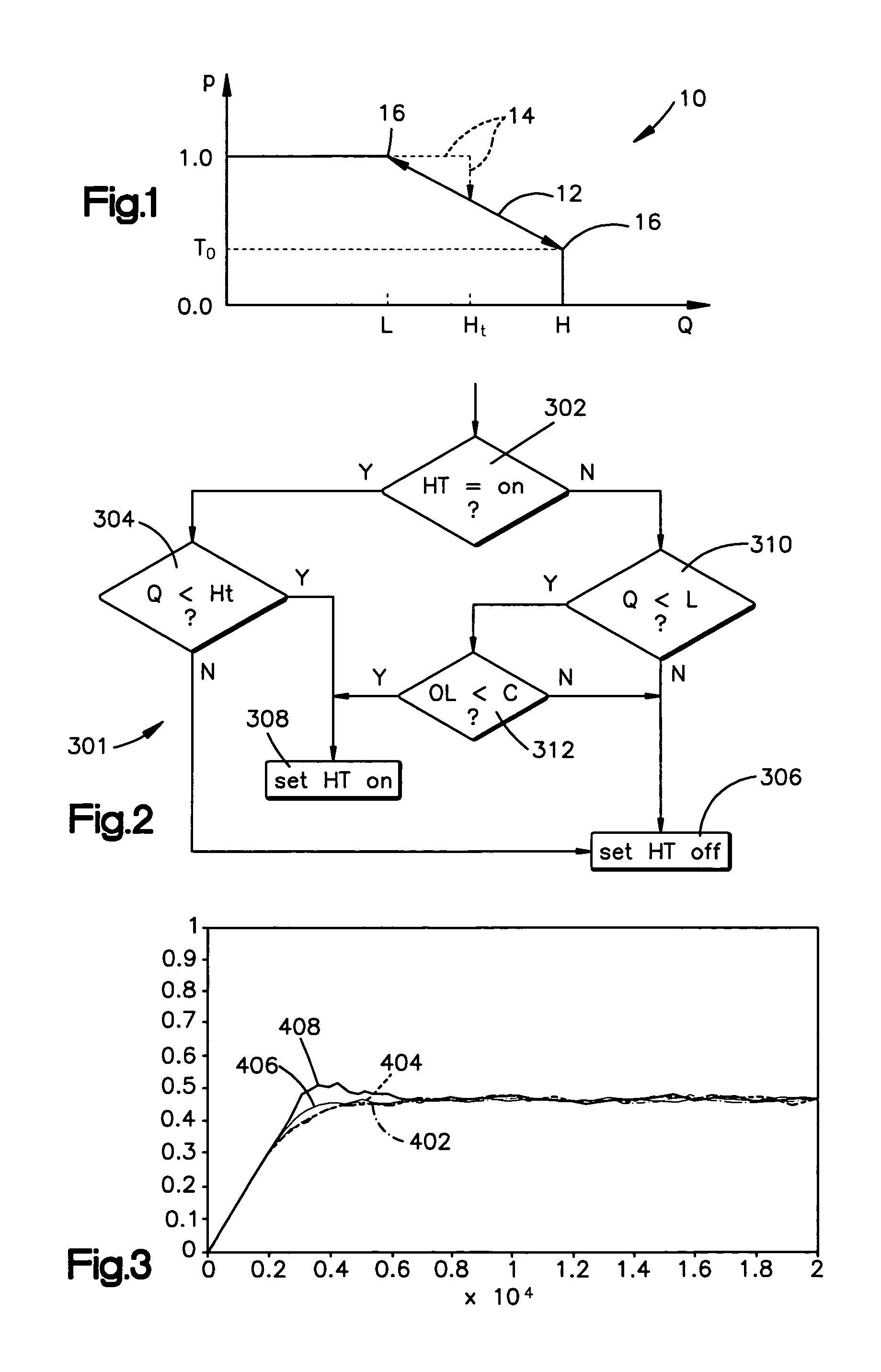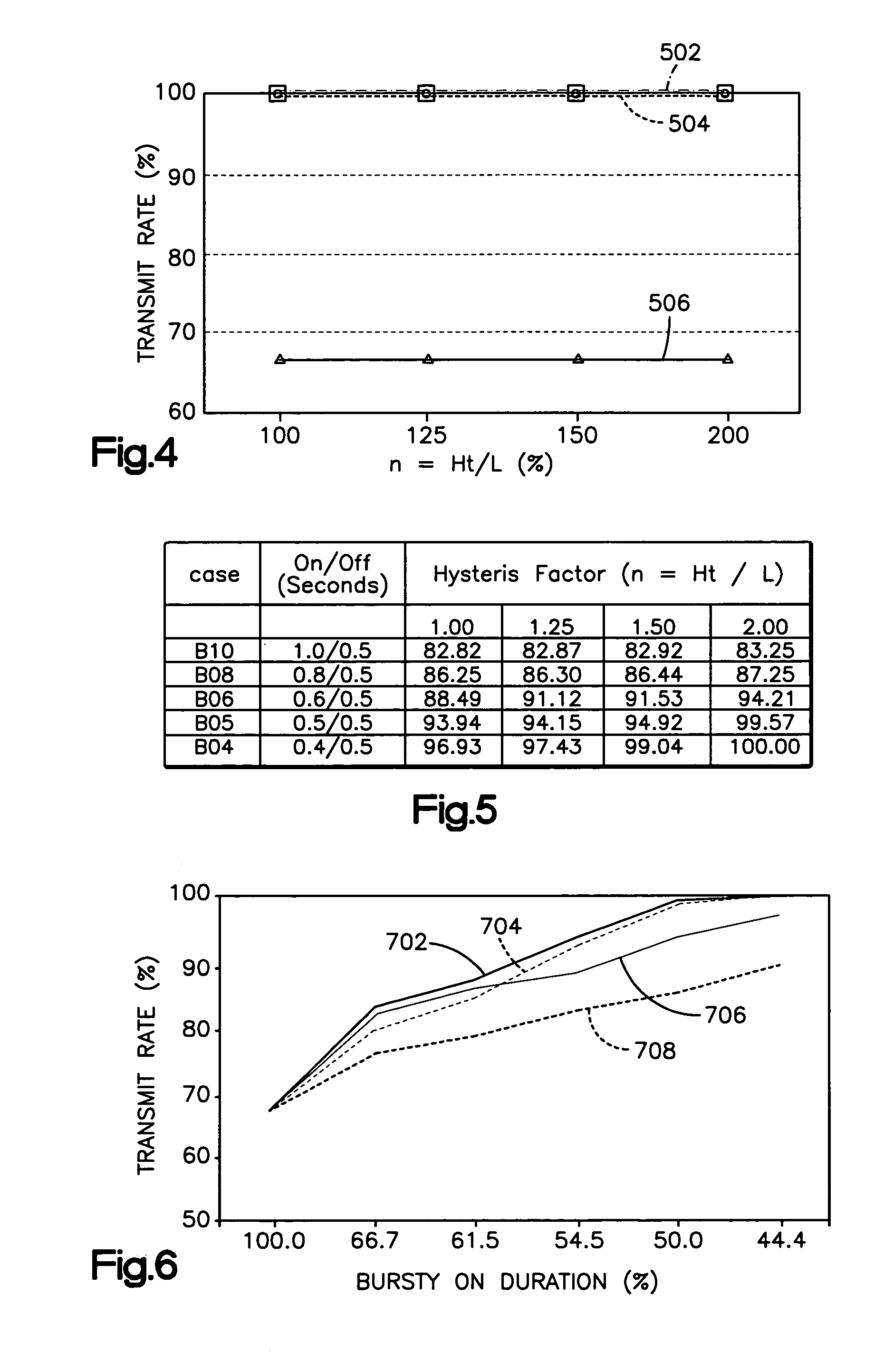Active flow management with hysteresis
a technology of active flow and network allocation, applied in data switching networks, frequency-division multiplexes, instruments, etc., can solve the problems of increasing queue level peak and exposing the system to tail drops, so as to increase system throughput, improve network performance, and increase packet transmit rate
- Summary
- Abstract
- Description
- Claims
- Application Information
AI Technical Summary
Benefits of technology
Problems solved by technology
Method used
Image
Examples
Embodiment Construction
[0029]The present invention applies “hysteresis” to active queue management techniques. Hysteresis is generally defined as “the lagging of an effect behind its cause” and it is well-known to use hysteresis behavior in applications that switch between two transmission modes in a variety of network system applications. In the present invention, where a queue is at a level below a certain low threshold (L) and a burst of packets arrives at this network node, then the probability of dropping the initial packets in the burst is recalculated, but the packets are not dropped. However, if the queue level crosses beyond a “hysteresis threshold” (Ht), then packets are discarded pursuant to a drop probability. This allows more packets from the burst to get into the queue. Thus, where the burst lasts for a short time (a “short burst”), then the present invention provides the ability to transmit every single packet.
[0030]According to the present invention, when a queue level is beyond the hyster...
PUM
 Login to View More
Login to View More Abstract
Description
Claims
Application Information
 Login to View More
Login to View More - R&D
- Intellectual Property
- Life Sciences
- Materials
- Tech Scout
- Unparalleled Data Quality
- Higher Quality Content
- 60% Fewer Hallucinations
Browse by: Latest US Patents, China's latest patents, Technical Efficacy Thesaurus, Application Domain, Technology Topic, Popular Technical Reports.
© 2025 PatSnap. All rights reserved.Legal|Privacy policy|Modern Slavery Act Transparency Statement|Sitemap|About US| Contact US: help@patsnap.com



